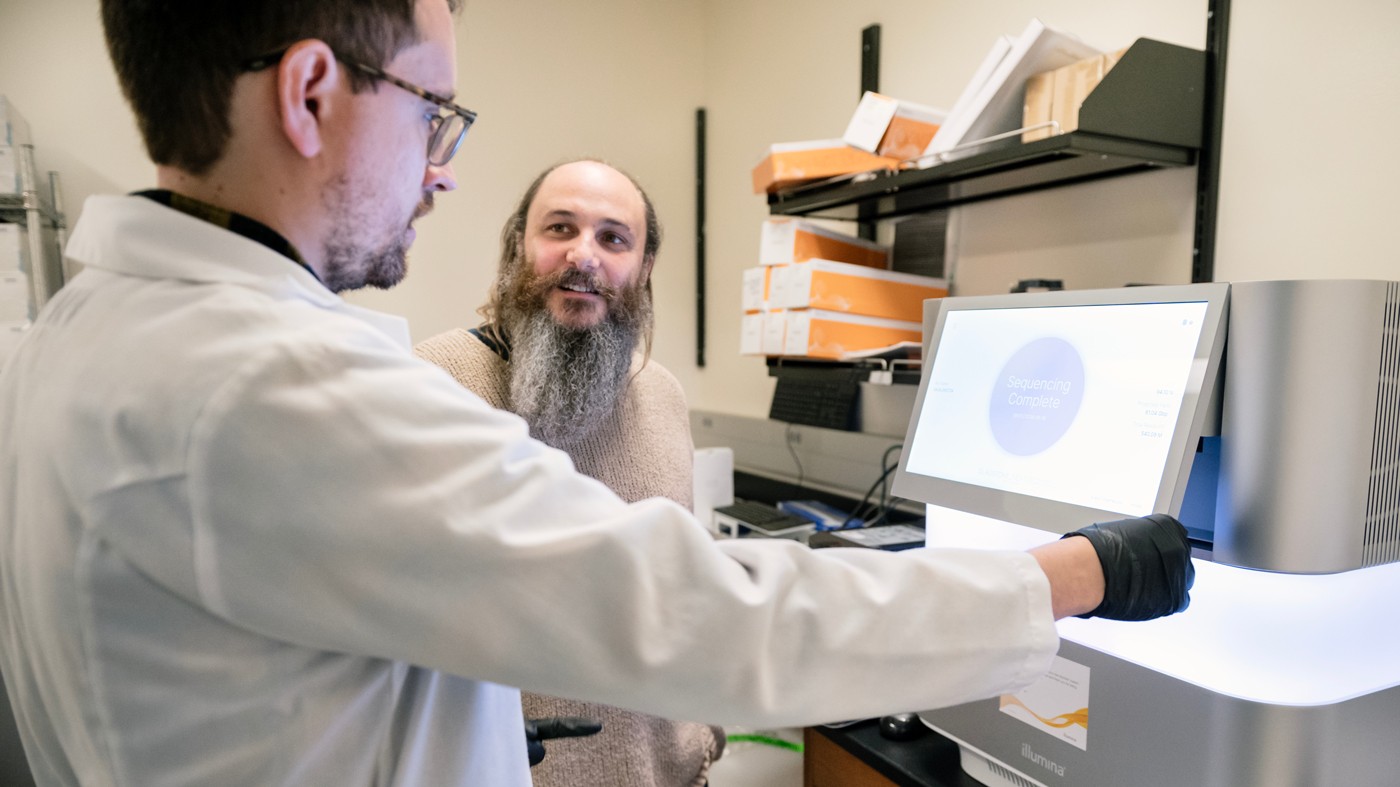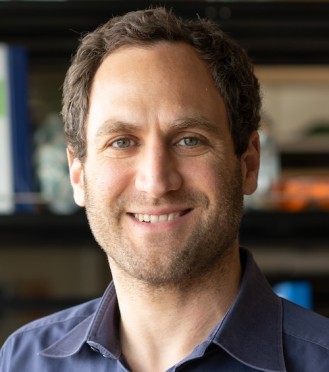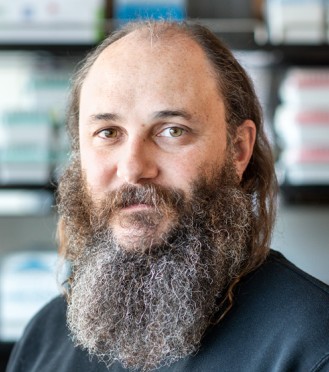Gladstone NOW: The Campaign Join Us on the Journey✕

For National DNA Day, discover how Gladstone scientists are utilizing the power of DNA to deepen our understanding of disease.
National DNA Day, observed on April 25, commemorates two monumental scientific achievements: the discovery of DNA's double helix in 1953 and the completion of the Human Genome Project in 2003. It’s a day to celebrate how far we've come in understanding the molecular instructions that guide all living things.
Here at Gladstone Institutes, DNA isn't just something we study—it's the foundation of some of our most innovative and promising research endeavors. Our multidisciplinary teams are pushing the boundaries of what's possible with genomic science, developing cutting-edge technologies while tackling fundamental questions about human health and disease.
Here, we explore five ways our researchers are harnessing the power of DNA to transform medicine, deepen our understanding of life's building blocks, and potentially solve some of our most pressing health challenges.
1. Creating a New Guide to Compare DNA Maps

Scientists at Gladstone developed a new guide to assist researchers in comparing maps of three-dimensional DNA organization, known as chromatin contact maps. The study, led by Katie Pollard evaluated 25 different methods used to analyze these maps, which are crucial for understanding how DNA structure influences cell function and disease. Their findings, published in Nature Methods, highlight the variability among comparison methods and emphasize the importance of selecting appropriate tools based on specific biological questions. The researchers made this information widely available to help the scientific community make more informed decisions when studying the folding of the genome in development, evolution, and disease. This work ultimately aims to improve our understanding of genetic mechanisms and potentially lead to new therapeutic approaches. Read more about this study.
2. Advancing Single-Molecule DNA Sequencing Technologies

Researchers in the lab of Vijay Ramani developed two new techniques, SMRT-Tag and SAMOSA-Tag, that dramatically reduce the amount of DNA needed for single-molecule sequencing. These innovative tools allow for detailed examination of genetic variants, crucial for understanding diseases like cancer, even when limited biological samples are available. With this new approach, the scientists can now obtain comprehensive genomic information from previously inaccessible small samples, potentially unlocking new biological insights and improving diagnostics. Their advancements, published in Nature Genetics, promise to expand the scientific and clinical applications of single-molecule DNA sequencing. Read more about this study.
3. Pioneering Gene Editing Techniques with Retrons

Scientists in Seth Shipman’s lab are using retrons, bacterial defense systems, to improve gene editing. The researchers tested a large number of previously unstudied retrons and identified many that edit DNA more rapidly and efficiently than current tools, even outperforming the standard retron in bacteria, phages (viruses that infect bacteria), and human cells. This expanded knowledge provides a significantly improved baseline for retron technology and offers a broader toolkit for understanding disease and developing therapies, such as gene editing to treat autoimmune disorders. Read more about the study, which was published in Nature Biotechnology.
4. Using Next-Gen CRISPR Tool to Create a Map of Immune Responses

Gladstone scientists, led by Alex Marson, have utilized advanced CRISPR base editing to construct a comprehensive molecular map of the human immune response. The team dove deep into the DNA of T cells, pinpointing specific nucleotides—the basic units of genetic information in DNA—that influence how immune cells respond to stimuli. They scrutinized more than 100,000 sites across nearly 400 genes found in functioning human T cells. This detailed mapping, published in Nature, pinpointed specific genetic locations that influence immune responses, offering valuable insights for developing new immunotherapies against cancer and autoimmune diseases. Read more about the study.
5. Determining Genetic Risk in Global Populations

Researcher Catherine Tcheandjieu is working to understand the genetic roots of disease. By analyzing immense amounts of genomic data, scientists in her lab are developing models to uncover factors that predispose individuals to disease and may differ between people of different ancestries. They are interested in identifying the specific parts of a person’s genome that contribute to their predisposition to disease, and utilize the latest genomics and machine learning technology to define the genes associated with cardiovascular disease in different populations. This method could eventually be applied to other complex disorders. Ultimately, by identifying genes that contribute to disease risk and combining this information with environmental exposure data, Tcheandjieu aims to build models that can predict a person’s likelihood of developing a disease and inform prevention protocols. Learn more about Tcheandjieu’s lab at Gladstone.
Featured Experts
Gladstone NOW: The Campaign
Join Us On The Journey
Science in Seconds | Researchers Pinpoint Key Gene Behind Heart Defects in Down Syndrome
Science in Seconds | Researchers Pinpoint Key Gene Behind Heart Defects in Down Syndrome
In this video, Gladstone scientists share how they used stem cells, gene editing, and AI to identify a gene driving heart defects in Down syndrome—and how reducing its levels in mice restored normal heart development, offering hope for future treatments
Gladstone Experts Cardiovascular Disease Data Science and Biotechnology Pollard Lab Srivastava Lab AI Big Data CRISPR/Gene Editing Human Genetics Stem Cells/iPSCsScience in Seconds | The Thinking Microscope: Research Powered by an AI Brain
Science in Seconds | The Thinking Microscope: Research Powered by an AI Brain
In this video, Steve Finkbeiner and Jeremy Linsley showcase Gladstone’s groundbreaking “thinking microscope”—an AI-powered system that can design, conduct, and analyze experiments autonomously to uncover new insights into diseases like Alzheimer’s, Parkinson’s, and ALS.
Gladstone Experts ALS Alzheimer’s Disease Parkinson’s Disease Neurological Disease Finkbeiner Lab AI Big DataVisualizing Stem Cell Technology: An Animated Explainer
Visualizing Stem Cell Technology: An Animated Explainer
In this animated short, Deepak Srivastava explains how scientists can reprogram ordinary skin or blood cells back in time—turning them into induced pluripotent stem cells which are capable of becoming any cell type in the body.
Gladstone Experts Stem Cells/iPSCs








